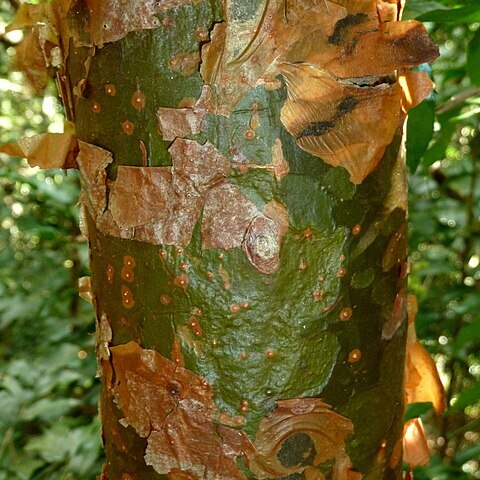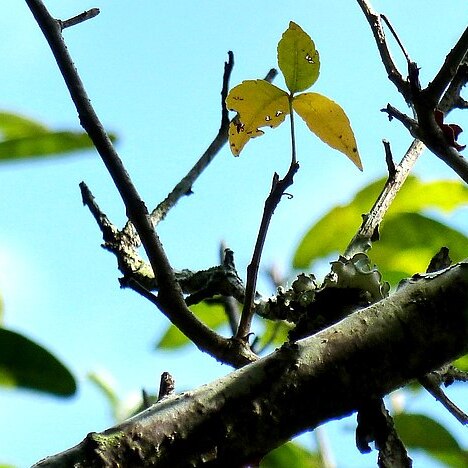Medium to large tree, 4-8 m high; bark peeling into large, coppery, papery flakes. Leaves alternate, trifoliolate, 2-or 3-jugate. Leaflets broadly lanceolate, apex acute, margins crenate-serrate, sparsely pubescent. Inflorescences axillary paniculate cymes; conspicuous bracts up to 6 mm long. Flowers small, green to yellow, unisexual, hypogynous, pedicel 2-3 mm long, pedicel and calyx sparsely pubescent; bracteoles up to 3 mm long. Disc 4-lobed, not adnate to perianth. Stamens 8. Flowering time Oct.-Dec. Fruit a subglobose drupe, 2-valved, glabrous, putamen (endocarp) smooth; pseudo-aril light red, with 4 arms, 2 long commisurate and two short facial arms.
A small tree. It grows 4-18 m high. The bark is yellowish. It peels off in thin papery sheets. The leaves have 3 to 5 leaflets. The leaflets are well spaced and oval. They taper to the tip. There are some teeth. The leaves are 6 cm long by 2.5 cm wide. The flowers are small and in clusters in slender flower arrangements. The fruit are round and pointed and 1 cm long.
Tree, up to 18 m high. Bark usually peeling in large brown papery pieces. Leaves and young branches glabrous. Leaves imparipinnate or 3-foliolate; lamina up to 150 mm long; leaflets oblanceolate, lanceolate or elliptic to ovate, margins crenate serrate. Flowers yellowish green.



